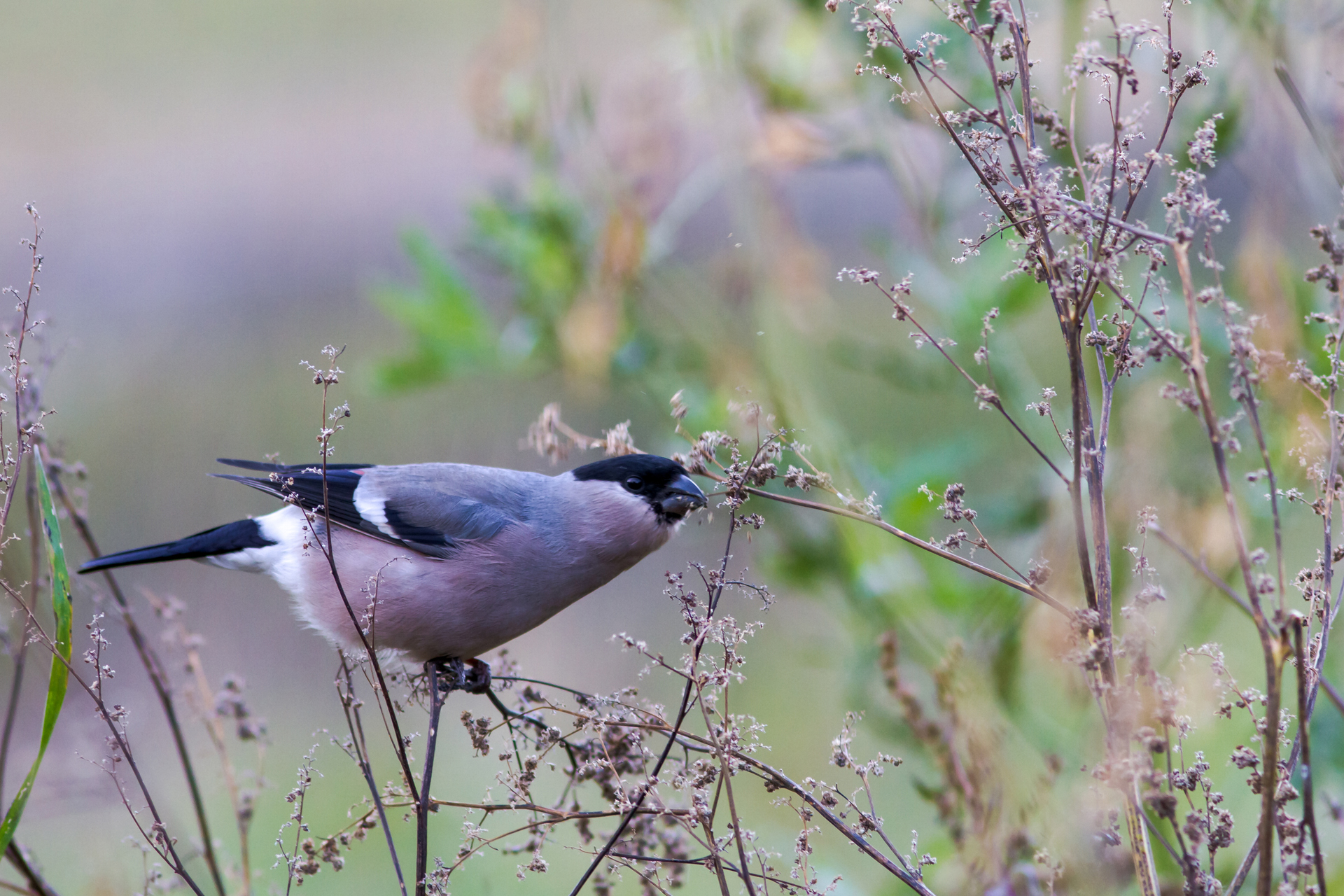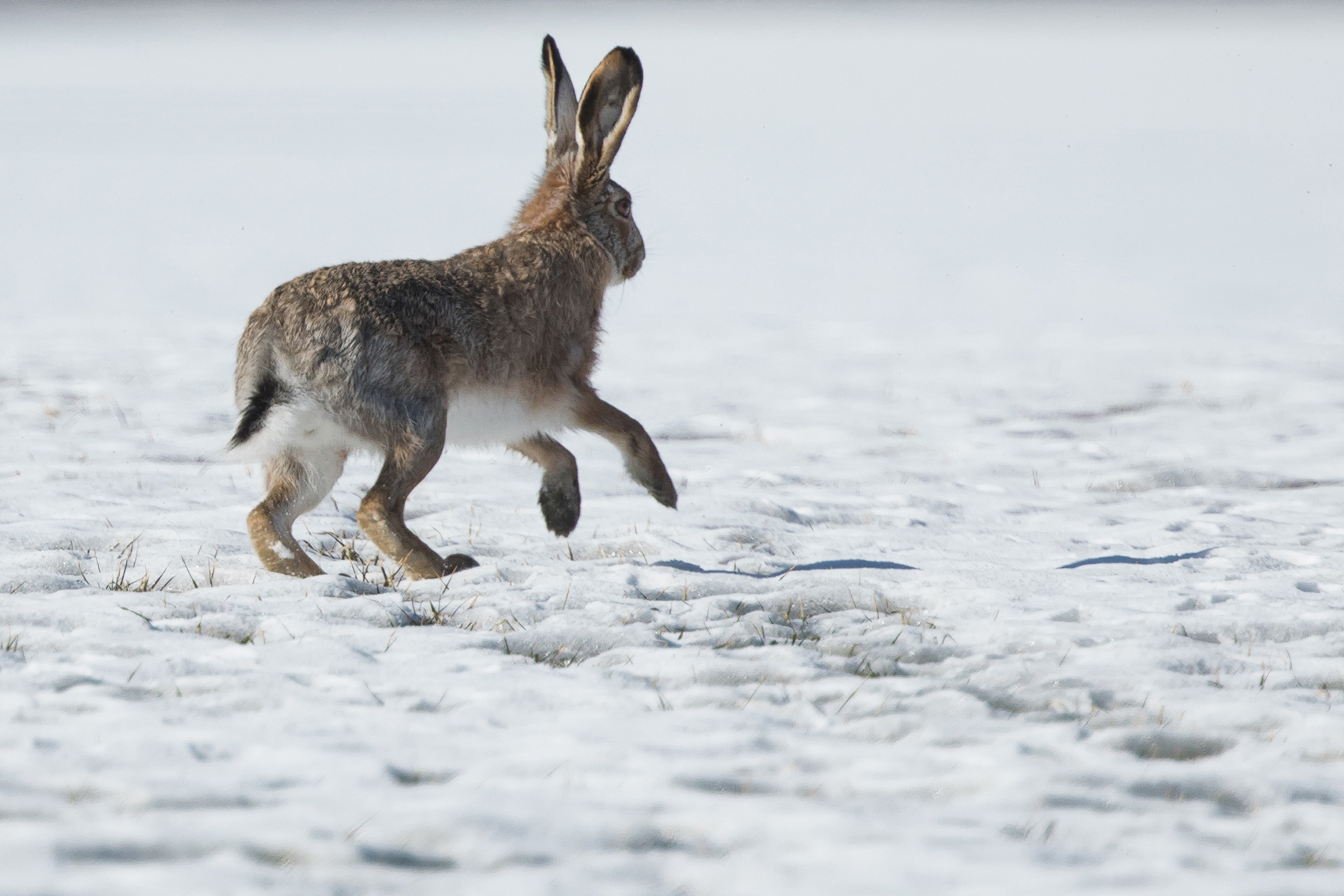The cold does not stiffen all small bugs
Most invertebrates winter in a dormant state – as eggs, larvae, cocoons or even adults – and only wake up again in the spring. However, there are also species that remain active throughout the winter under the snow, where they are protected against freezing weather. During milder periods and especially in late winter/early spring, they may also gather in large numbers on the snow to “stretch their legs,” which often confounds skiers and other people enjoying the winter outdoors. One of the easiest to spot is the few-centimetres-long, hairy larva of the ruby tiger moth, as it makes its way across the snow with great determination. Those with keen eyes may also spot spiders, winter gnats, Boreus westwoodi and springtails, which appear as small, dark spots against the snow.
Sometimes the surface of the snow may be filled with little black spots. A closer look reveals these spots to be mobile – the springtails are on the move. Springtails are arthropods measuring only a few millimetres that play an important role in the recycling of organic matter. The reason why they are called springtails is their ability to spring away from predators: they have a tail-like appendage, called a furcula, folded beneath their bodies that launches them into the air when threatened, hopefully carrying them to safety in the process.


